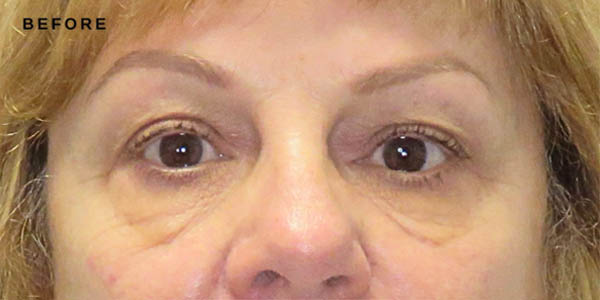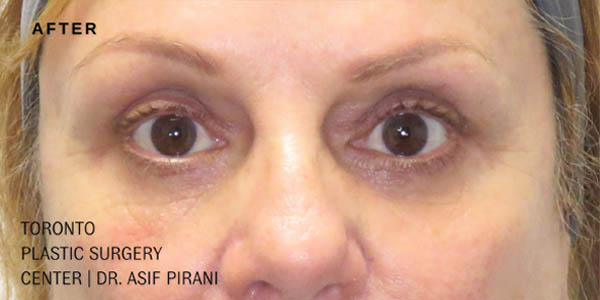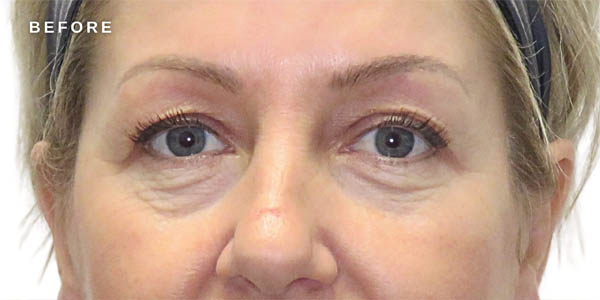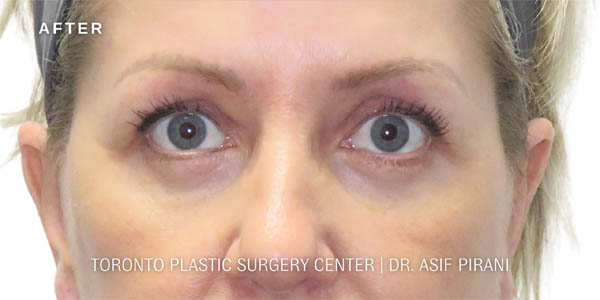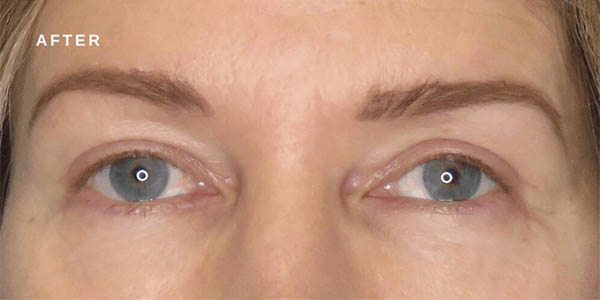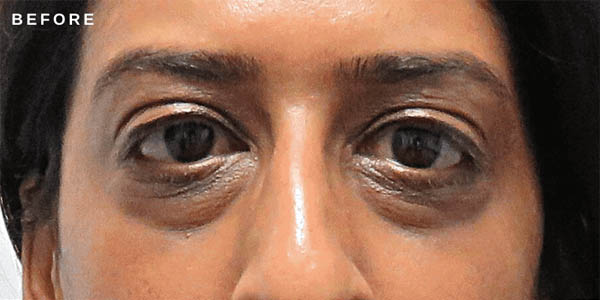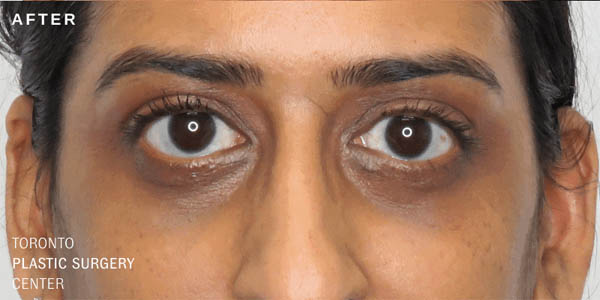- Body
- Breast
- Face
- Injectables
- BOTOX®, Dysport & Nuceiva
- Dermal Fillers
- Earlobe Filler
- Facial Slimming
- Gummy Smile Correction
- Hyaluronidase
- Hyperhidrosis
- Jawline Filler
- Lip Injections
- Non-Surgical Brow Lift
- Non-Surgical Double Chin Reduction
- Non-Surgical Facelift
- Non-Surgical Hand Rejuvenation
- Non-Surgical Nose Job
- Tear Trough Treatment
- Skin
- Male
- Gallery
- About
- Resources
- Contact
Introduction
Introduction to Eyelid Surgery
Rejuvenation of the eyelids is a complicated and delicate procedure. As a highly experienced and board-certified Toronto plastic surgeon, Dr. Pirani will appropriately assess whether you need to have excess skin removed, fat repositioned, or the underlying soft tissues tightened for a rejuvenated look.
Overview: Toronto Eyelid Surgery Costs From $7,500+ | 1-2.5 Hour Surgery | Financing as low as $150/month
Before & After Results
* The results depicted are not guaranteed and may vary between patients.
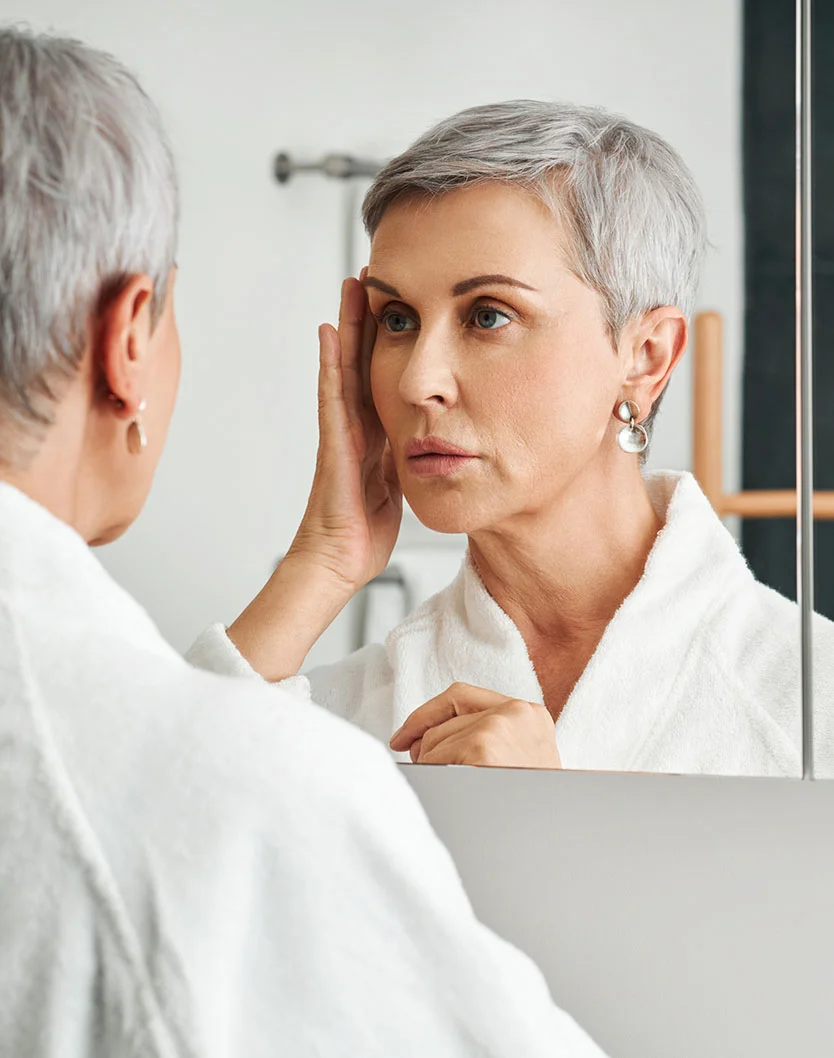
What is Eyelid Surgery?
Eyelid surgery, also known as blepharoplasty, is a cosmetic procedure that improves the appearance of the upper and lower eyelids by removing excess skin, fat, and muscle. Eyelid surgery can also correct droopy eyelids, puffy bags, and dark circles that make you look tired, sad, or older than you are.
If you are interested in eyelid surgery in Toronto, read on to learn more about this procedure and how Dr. Pirani can help you achieve your aesthetic goals.
Types of Eyelid Surgery
Upper Blepharoplasty
Upper eyelid surgery, also known as upper blepharoplasty, removes excess skin, fat, and muscle from the upper eyelids to create a more open, alert, and youthful appearance. It can also improve vision by eliminating the excess skin that droops over the eyelashes and obstructs the field of view.
Dr. Pirani performs upper eyelid surgery using the following steps:
- He marks the incision lines along the natural creases of the upper eyelids
- He administers local anesthesia with sedation or general anesthesia
- He makes the incisions and removes the excess skin, fat, and muscle
- He closes the incisions with fine sutures and applies sterile dressings
- He monitors your recovery and provides you with post-operative instructions
Upper eyelid surgery is usually an outpatient procedure that takes about one hour to complete. After a brief observation period, you can go home the same day.
Lower Blepharoplasty
Lower eyelid surgery, also known as lower blepharoplasty, is a procedure that removes or repositions excess fat, tightens the skin and muscles, and smooths the wrinkles and fine lines of the lower eyelids. Lower eyelid surgery can also correct puffy bags, dark circles, and sagging skin that make you look tired, sad, or older than you are.Dr. Pirani performs lower eyelid surgery using one or both of the following techniques:
- External incision (Skin Pinch): He makes an incision just below the lash line (below the lower eyelid margin), removes excess skin, and closes the incision with fine sutures. This technique suits patients with moderate to severe excess skin, fat, or muscle on the lower eyelids.
- Transconjunctival approach: He makes an incision inside the lower eyelid and removes or repositions the excess fat. This technique is suitable for patients who have mild to moderate excess fat but no excess skin or muscle on the lower eyelids. There is no external scar if only this approach is used.
Lower eyelid surgery is usually an outpatient procedure that takes one to two hours to complete. After a brief observation period, you can go home the same day.
What Are the Benefits of Eyelid Surgery?
Eyelid surgery offers a variety of benefits that can improve your appearance and quality of life. Here are some of its major advantages:
- Restores a youthful appearance by removing excess skin and fat.
- Improves vision by eliminating drooping eyelids that may obstruct sight.
- Reduces puffiness and under-eye bags for smoother, firmer skin.
- Provides long-lasting results with minimal upkeep.
- Enhances facial harmony with a natural-looking lift around the eyes.
Who Are the Best Candidates For Eyelid Surgery?
You may be a good candidate for eyelid surgery if you:
- Are in good general health and have no medical conditions that could affect healing
- Have realistic expectations and goals for the outcome of the surgery
- Have excess skin, fat, or muscle on your upper or lower eyelids that affects your appearance
- Have puffy bags or dark circles under your eyes that make you look older or sad
- Want to enhance your facial harmony and balance
The best way to determine if you are a suitable candidate for eyelid surgery is to schedule a consultation with Dr. Pirani. He will evaluate your eyelids, facial anatomy, skin quality, and medical history. He will also discuss your concerns, expectations, and options and recommend your case’s best course of action.

What’s the
First step?
Before you decide to undergo eyelid surgery, you need to have a thorough consultation with Dr. Pirani. During the consultation, he will:
- Listen to your concerns, goals, and expectations
- Examine your eyelids, facial features, skin quality, and eye function
- Take measurements and photos of your eyelids and face
- Review your medical history, medications, allergies, and lifestyle habits
- Explain the procedure, risks, benefits, alternatives, and costs
- Answer any questions you may have
- Develop a personalized surgical plan that suits your needs and preferences
The consultation is a very important step in the eyelid surgery process. It is your opportunity to get to know Dr. Pirani, express your desires, and learn more about the procedure. It is also your chance to ask any questions or address any concerns you may have. Dr. Pirani will provide you with honest and professional advice and guide you through the decision-making process.
What to Expect on the Day of Eyelid Surgery
During eyelid surgery, Dr. Pirani will make precise incisions along the natural creases of the upper and lower eyelids. Excess skin and muscle that may be causing a heavy, tired appearance will be carefully removed or repositioned, lifting the eyelids for a more youthful look. For the lower eyelids, any puffiness or under-eye bags caused by excess fat will be addressed either by removing or redistributing the fat, and excess skin will be tightened.
Eyelid Surgery Recovery
The recovery time from eyelid surgery varies depending on the extent and type of the procedure, your individual healing ability, and your adherence to the post-operative instructions. In general, you can expect to:
- Return to work and social activities after about one to two weeks
- See near-final results of your eyelid surgery after about six to twelve months
- Enjoy the benefits of your eyelid surgery for many years or even permanently
Dr. Pirani will provide you with specific guidelines and timelines for your recovery based on your case. He will also follow up with you regularly to ensure that you are healing well and that you are satisfied with the outcome of your eyelid surgery.

How Much Does Eyelid Surgery Cost in Toronto, Ontario?
The cost of eyelid surgery in Toronto typically starts at $7,500.
Book a consultation with Dr. Pirani to receive a personalized estimate. We offer financing options starting as low as $150 per month.
Why Choose Dr. Pirani?
Dr. Asif Pirani is a highly respected board-certified plastic surgeon with refined results. A Toronto native, he graduated with honors from the University of Toronto and completed his plastic surgery training at the University of British Columbia, where he was named Chief Resident.
Dr. Pirani refined his expertise through a prestigious fellowship at NYU’s Institute of Reconstructive Plastic Surgery, where he worked alongside leading surgeons in the field. Now, he leads The Toronto Plastic Surgery Center on the exclusive Mink Mile at 2 Bloor Street West. The center offers a personalized, luxurious approach to care.
Dr. Pirani combines advanced techniques with a compassionate, patient-centered approach to ensure the best possible results. He is also a proud member of the Royal College of Physicians & Surgeons of Canada (FRCS).
Eyelid Surgery FAQ’S
Toronto Plastic Surgery Center
Schedule a Consultation
If you are interested in eyelid surgery in Toronto, contact us today to schedule a consultation with Dr. Pirani. He will be happy to meet you and discuss your eyelid surgery options. He will help you achieve a more youthful, refreshed, and attractive appearance of your eyelids and eyes.
